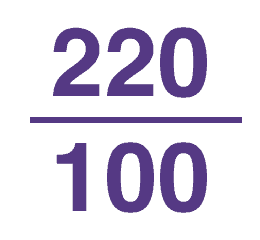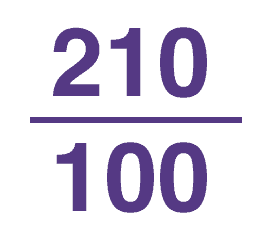If you want an accurate understanding of how much yarn you have, you need a scale.
Imperial or Metric?
It doesn’t matter which system you use in everyday life, when weighing yarn you should use GRAMS.
Why? Grams are A LOT more specific.
Your climate matters
Fibers can take in moisture. It’s very likely that if you weighed the same skein of yarn in different times of the year that it would weigh different amounts.

This means that just weighing a yarn to check if you got the right amount isn’t enough. While professional yarn purveyors likely know this (and take it into account) you may not – but you should.
Having said that, if your ball of yarn weighs significantly more (or less) than expected, you probably did get extra (or not enough).
But, if it’s close, I wouldn’t conclude that you either got too much or even not enough. In this case, I’d start with emailing them to see what they have to say.
What if someone says to use X Grams of yarn?
I’m personally not a fan of this way to describe yarn usage for a larger item (more on that later).
Even 2 yarns that are deemed “the same” can vary in terms of its thickness. Just think of all the different yarns that are called “fingering”. Some are a thicker fingering and some are a thinner fingering weight. That variance translates to a different amount of yarn (the yardage/meterage).
I always translate it to grams per yard if I want to replace a yarn.
What if you don’t like math?
The first thing I’d recommend is to take out a basic calculator. Even the one on your phone will be fine!
Start with the recommended yarn
Take the yards (or meters) and divide that by the weight.
So, if the yarn is 220 yards for 100 grams, it would be

Or, 2.2 (yards per gram, if you want to get technical).
And do the same thing for your new yarn
Then, take your new yarn. Let’s say it’s 210 yards for 100 grams. It would be:

Or, 2.1 (yards per gram)
These two yarns are very close in weight.
My replacement yarn has different amounts of each fiber
If your new yarn has different fibers, this comparison that I outlined won’t be DEFINITIVE. It *will* be helpful, but you can’t just learn that something is longer or shorter and so it isn’t a good fit.
Why is this the case? Different fibers are often either heavier or lighter. There’s a whole lot to consider when changing fibers – gauge, weight, ply and application – and we give you a lot more details in our article “Ready, Set, Sub”. Be smart about your decisions and read the article.
Anything More on Ply?
I always say that Ply is the best-kept secret in the fiber world. The discussion of plies is outside the scope of this article, but it’s a very important consideration.

Yes, You really Need a Scale
If you want to:
- Know more about your yarn
- Substitute a different yarn
- Choose between several yarns
then you need a scale. I keep mine right with my yarn and use it almost as often as I do a darning needle. It’s that important.
About the Instructor: Jody Richards

Jody is the founder and lead editor of Knotions. She loves poring over stitch dictionaries and trying out new stitches. And while she likes all things crafting (well ok, except that one thing), yarn crafts are her true love (and she has the stash to prove it).
She’s a serial starter-of-projects and has a serious problem with finishing things without a deadline.
And don’t get her talking about hand-dyed yarns. You’ve been warned.



Leave a Reply